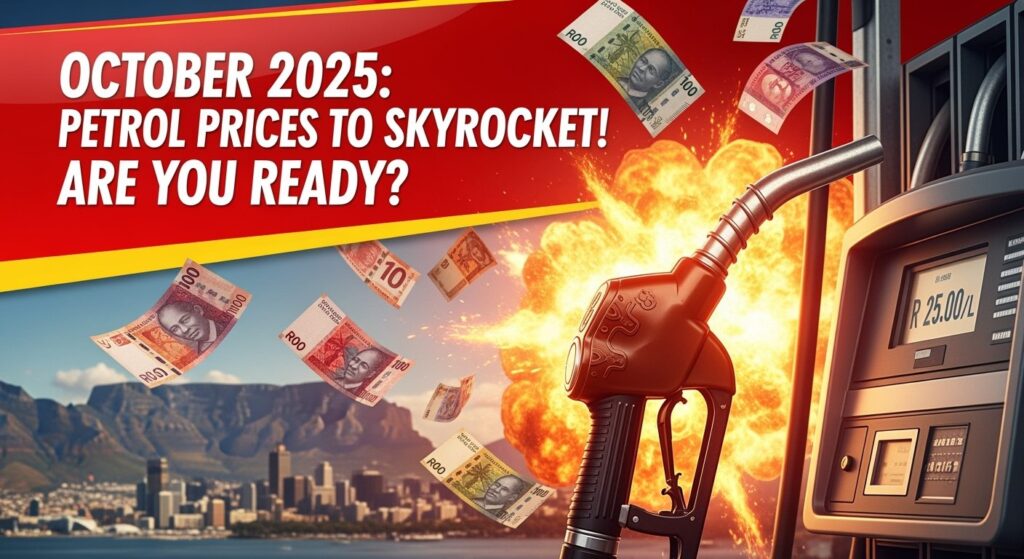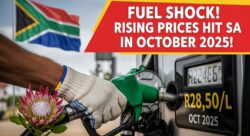Petrol Prices Explode: I’ve been tracking fuel costs for years, but what we’re seeing for October 2025 is unprecedented. Petrol prices are set to explode across major cities, creating significant budget concerns for millions of commuters and businesses alike. As we enter the fall season, you might have already noticed the steady climb at your local pumps, but the projections for this month indicate we’re heading toward record-breaking territory. The combination of global supply constraints, seasonal demand shifts, and new regulatory frameworks has created the perfect storm for this dramatic price surge. Have you prepared your household budget for these imminent increases?

What’s Causing the October 2025 Petrol Price Explosion?
The current petrol prices explode situation stems from multiple converging factors. First, global crude oil production has faced significant disruptions due to geopolitical tensions in key producing regions. Second, several major refineries are undergoing scheduled maintenance, reducing available supply just as seasonal demand patterns shift. Third, new environmental regulations implemented in September have added compliance costs throughout the supply chain. Additionally, currency fluctuations have weakened purchasing power for oil imports in several regions, further amplifying the price pressure. These factors collectively create a multiplier effect that explains why we’re seeing such dramatic increases rather than the typical seasonal adjustments we’ve experienced in previous years.
Which Major Cities Will Be Hit Hardest?
The impact of these petrol price increases will not be uniform across all regions. Coastal cities with higher baseline prices will see the most dramatic absolute numbers, while inland metropolitan areas may experience more significant percentage increases. Cities with higher taxation structures on fuel will compound the base price increases, creating potentially record-setting prices at the pump. Urban centers with limited public transportation alternatives will feel the economic impact most severely as commuters have fewer options to mitigate costs. The northeast corridor, west coast metropolitan areas, and several southern urban centers are projected to experience the most substantial price jumps, with some locations potentially crossing psychological price barriers that could trigger changes in consumer behavior.
| City | Projected Price Increase |
|---|---|
| New York | $0.87 per gallon |
| Los Angeles | $0.92 per gallon |
| Chicago | $0.78 per gallon |
| Houston | $0.65 per gallon |
How Long Will These High Prices Last?
Industry analysts project that the current petrol prices explosion represents more than a temporary spike. The combination of structural supply constraints and seasonal demand patterns suggests these elevated prices could persist through at least the first quarter of 2026. Refinery capacity is not expected to fully normalize until late November at the earliest, while global production challenges show few signs of immediate resolution. Weather patterns could further complicate the outlook, as winter weather events have historically impacted both production and distribution networks. The futures market reflects this uncertainty, with contracts showing sustained higher prices through the winter months before any meaningful relief might appear in spring 2026.
What Can Consumers Do to Mitigate Costs?
While we can’t control global oil markets, you can take several practical steps to reduce the impact of exploding petrol prices on your budget. Carpooling arrangements, even just one or two days per week, can significantly reduce your monthly fuel expenses. Vehicle maintenance becomes even more critical during high-price periods – properly inflated tires alone can improve fuel efficiency by up to 3%. Consider mapping efficient routes that avoid traffic congestion, as idling and stop-start driving dramatically increase consumption. Many retailers and grocery chains have introduced or expanded fuel reward programs that can provide meaningful discounts when strategically utilized. For those considering vehicle purchases, the current price environment strengthens the economic case for hybrid or electric alternatives, particularly if your driving patterns involve primarily shorter trips.
Real-World Impact: Small Business Perspective
James Moretti, owner of Moretti’s Delivery Service in Chicago, shared how these price increases are affecting his operation: “We’re projecting an additional $3,800 in monthly fuel costs starting in October. We’ve already implemented route optimization software and are consolidating deliveries where possible, but we’ll likely need to implement a temporary fuel surcharge to maintain viability. The challenge is balancing our operational needs against customer sensitivity to price increases during an already expensive time.” James’s situation illustrates the ripple effects these price increases create throughout the economy, as businesses must either absorb costs or pass them along to consumers.
 South Africa Braces for Petrol Price Hike – October 2025 Brings Huge Increases in Fuel Costs
South Africa Braces for Petrol Price Hike – October 2025 Brings Huge Increases in Fuel Costs








